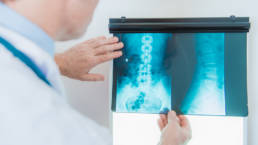Bones are Living Tissues
When it comes to bones, patients regularly have the image of ‘steel rods’ or ‘concrete pillars’ used to support the body and allow muscles to attach to.
Fact is, the bones in our body are in constant change all the time. Bones are always undergoing remodeling and repair. This happens via a collaborative effect of bone cells labelled osteoblasts and osteoclasts. Osteoblasts help lay down new bones, while osteoclasts dissolve bone. This is integral to allow for adaptation of bones. Our bone cells are influenced by the levels of calcium in the body and hormones.
This is why adequate calcium intake and a good nutrition plan is vital. As we age we may undergo hormonal changes such as reduced testosterone in males and menstrual disturbances in females, all of this could cause decrease in bone density and osteoporosis!
Bones like every other living tissue in our body undergoes a process of ‘break down’ as they undergo loading and use. The amount of ‘break down’ is related to the amount of activity or load they undergo. A walk in the park will not cause as much breakdown as lifting heavy deadlifts at the gym. When we load our bones up too much without sufficient time for recovery, a bony stress injury can develop.
While it is commonly known that low bone density will increase the likelihood of the development of stress fractures, recent development has revealed that joint range of motion, muscular flexibility and alignment may play a big role as well. A joint that is restricted or not having a full range of motion does alter loading responses and influences the magnitude of strain going through the bone.
We hope this short post has helped you gain a further understanding of bones. If you are struggling with any pains and would like to get it professionally assessed, feel free to come consult our practitioners.
References
Florencio-Silva R., Sasso GR, Sasso-Cerri E., Simoes MJ, Cerri P.S. Biology of bone tissue: Structure, function, and factors that influence bone cells. Biomed Res Int. 2015;2015:421746.
Bennell K., Matheson G., Meeuwisse W., Brukner P. Risk factors for stress fractures. Sports Med. 1999;28(2):91-122.
Related Posts
Are Human Beings Symmetrical?
16 August 2016
The current mindset is that we are born symmetrical. Disabilities aside, we all have a pair of hands; legs, ears etc. There are intricacies within the human body that would in fact cause us to be asymmetrical.
0 Comments4 Minutes
What are Stress Fractures?
2 November 2016
Stress fractures are less common injuries but are responsible for slow recovery times and time off sport and training. Statistics point that stress fractures only account for up to 20% of all sporting injuries and is sport dependent.
0 Comments2 Minutes


